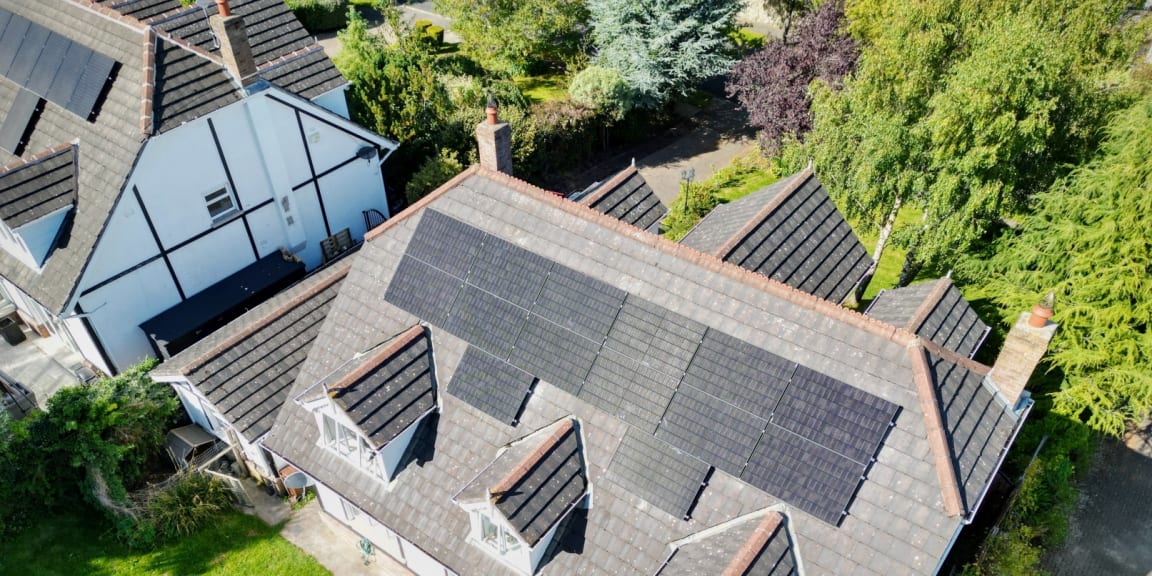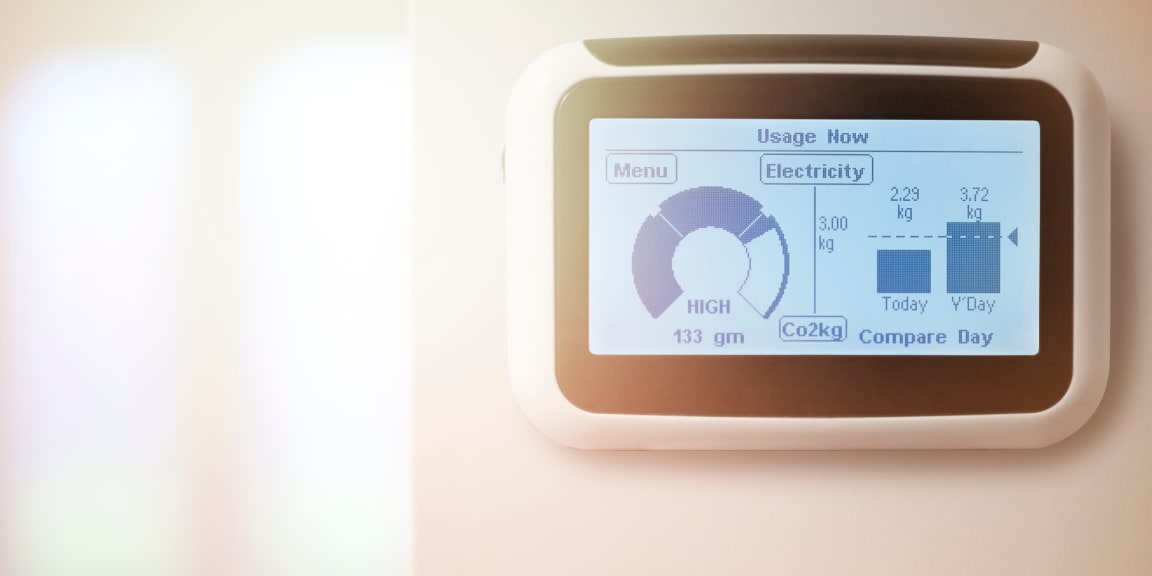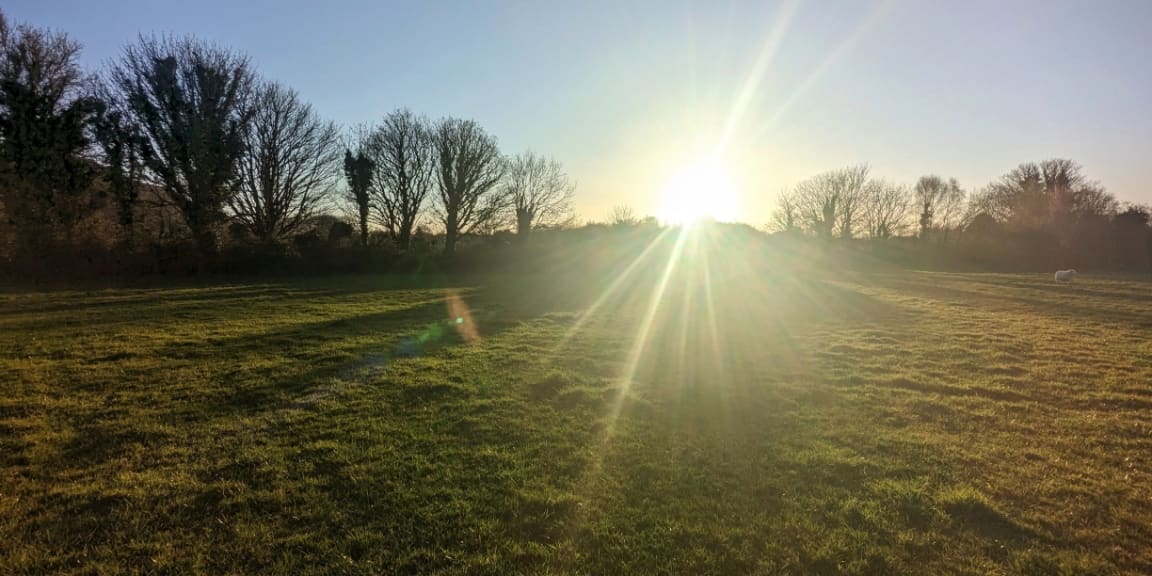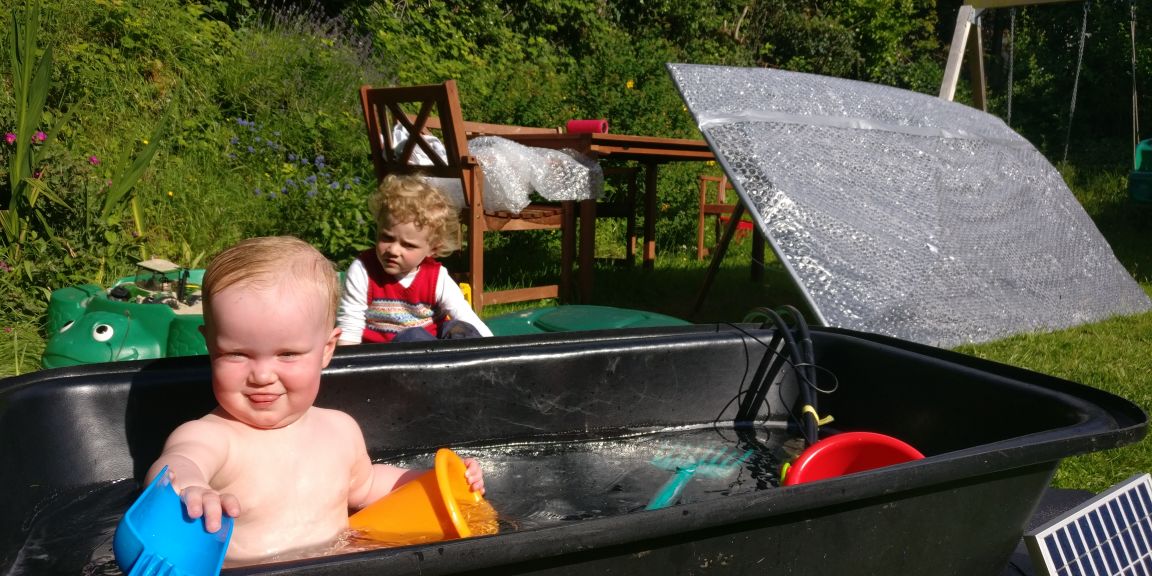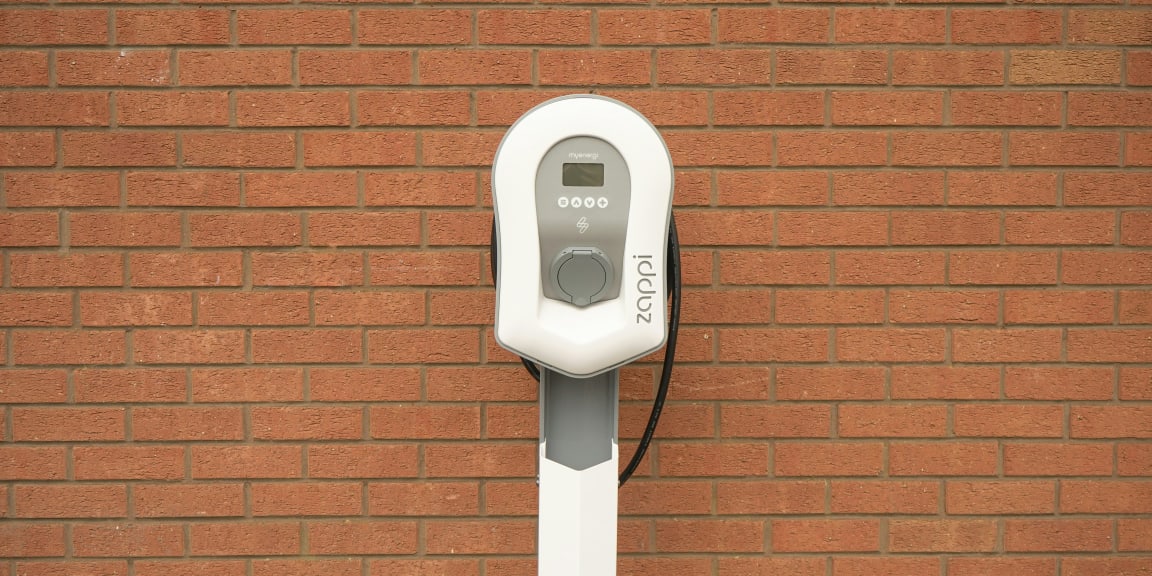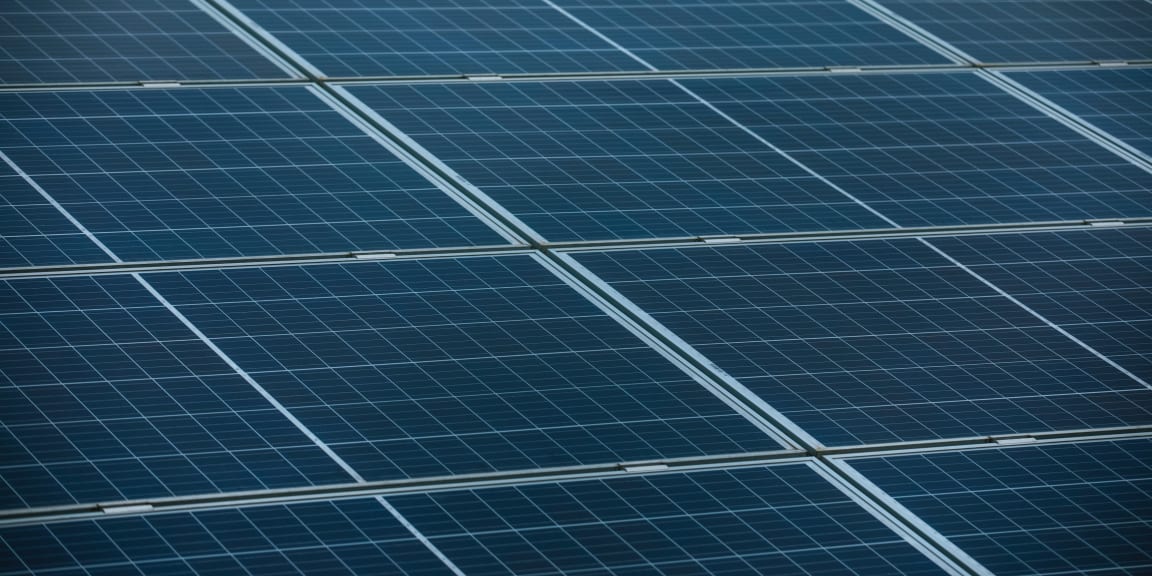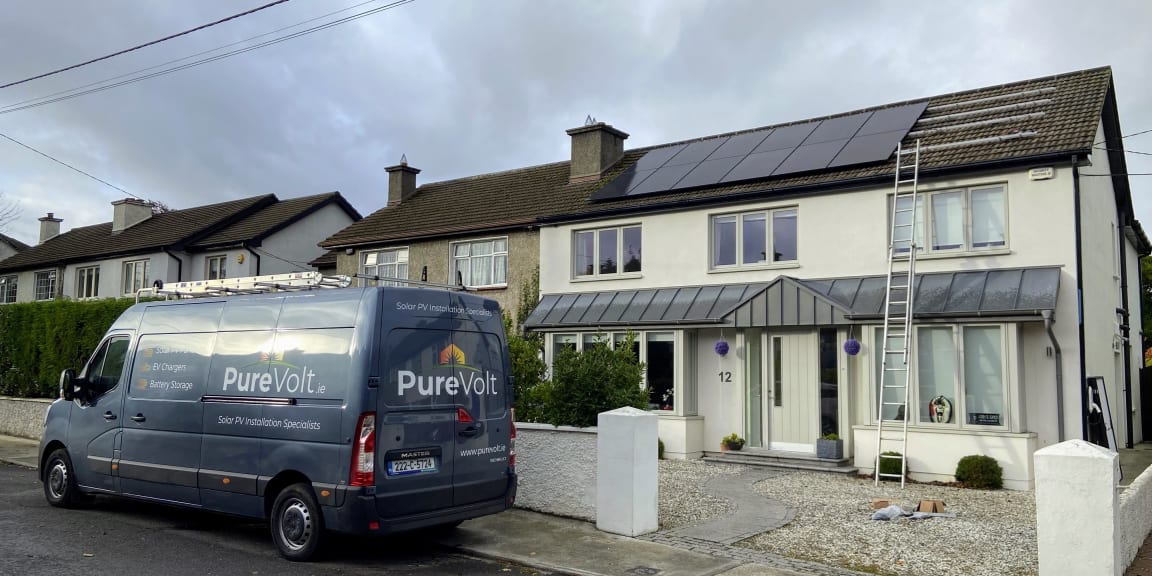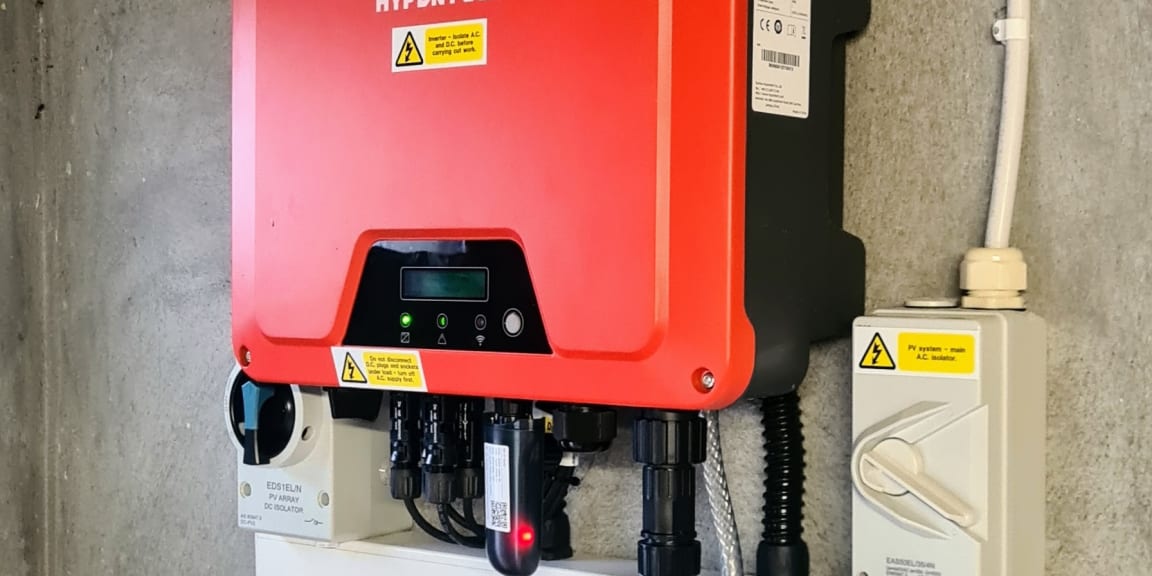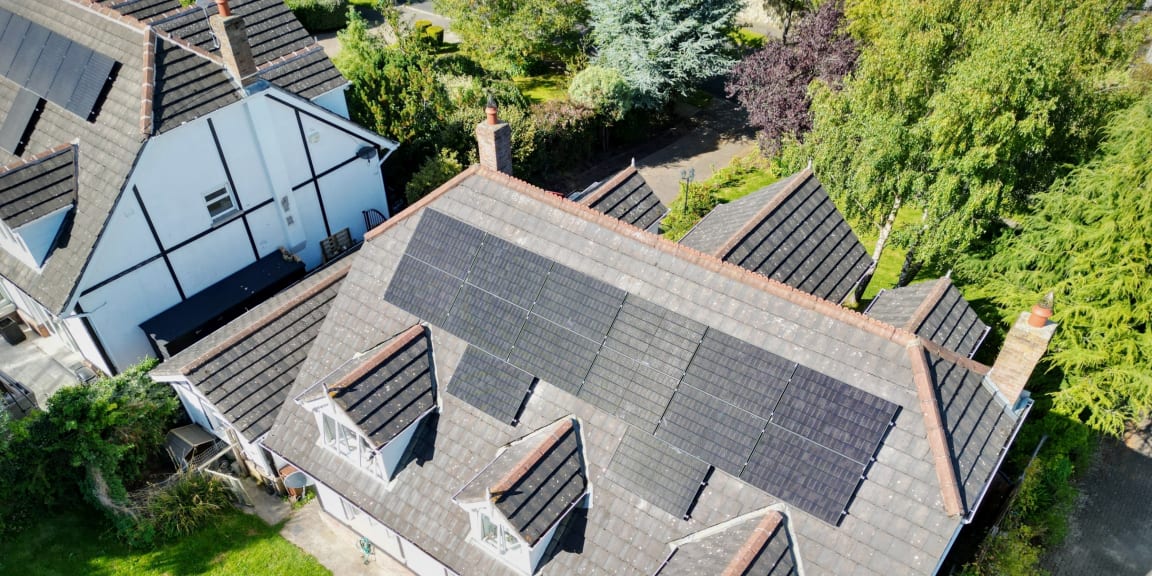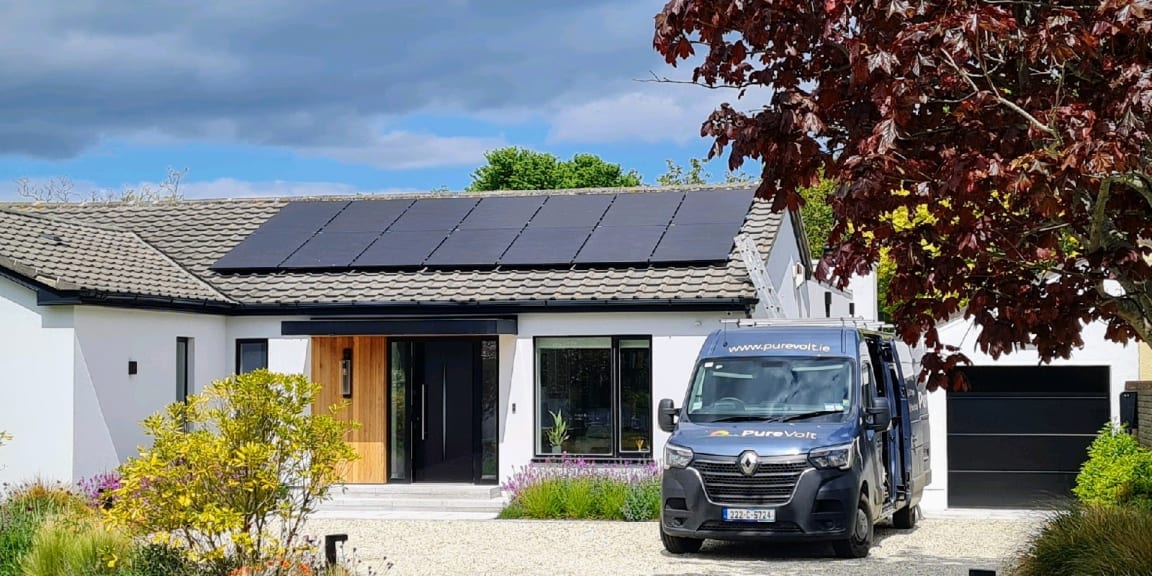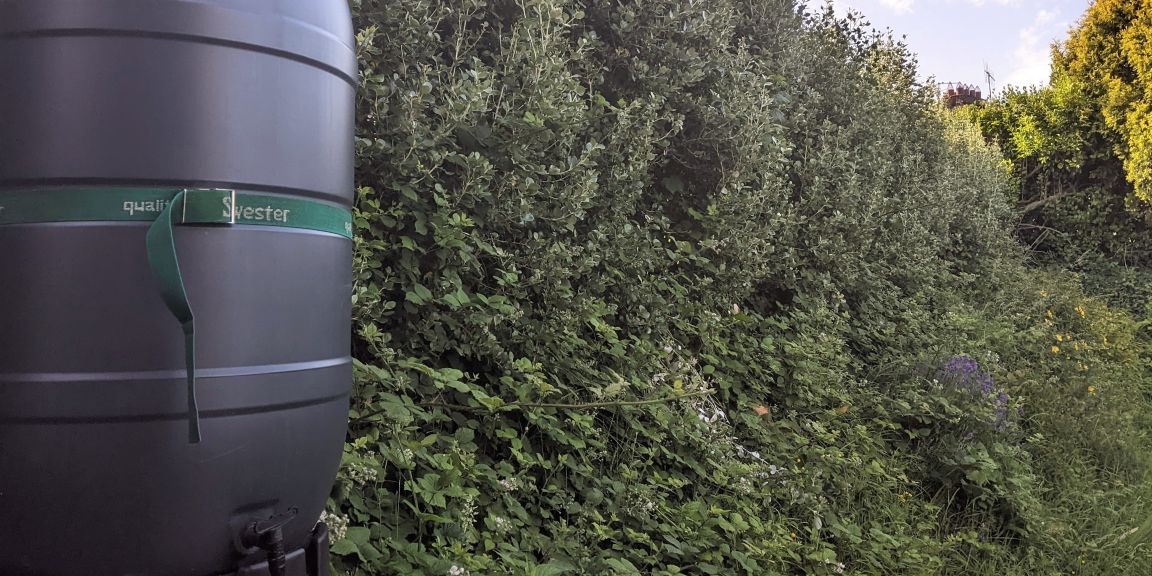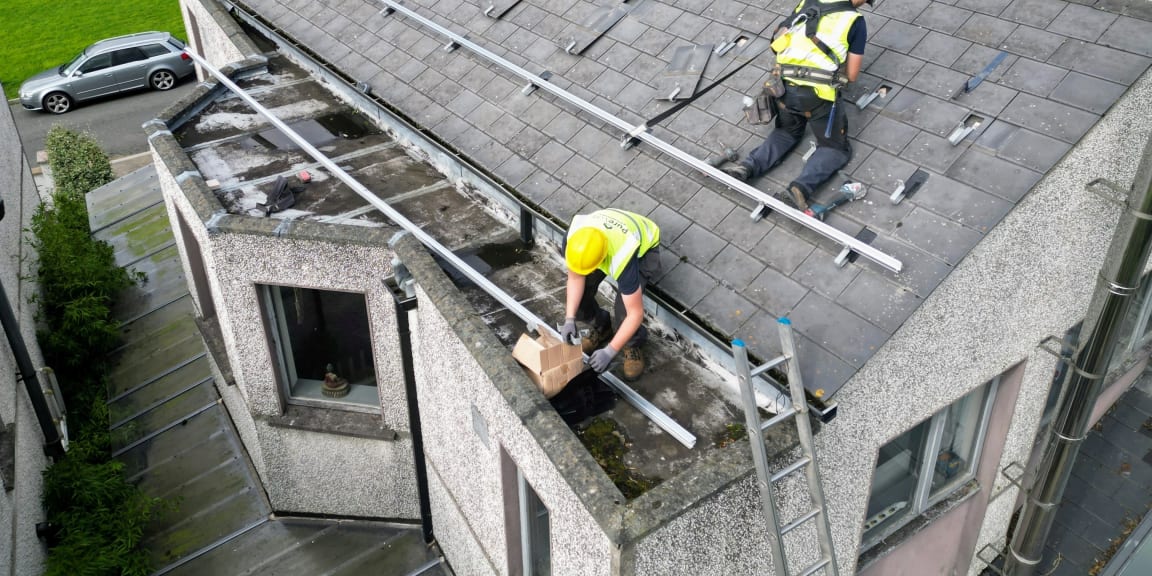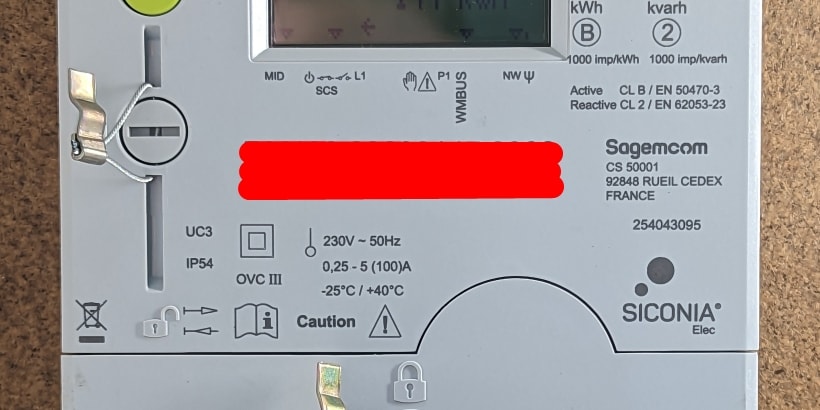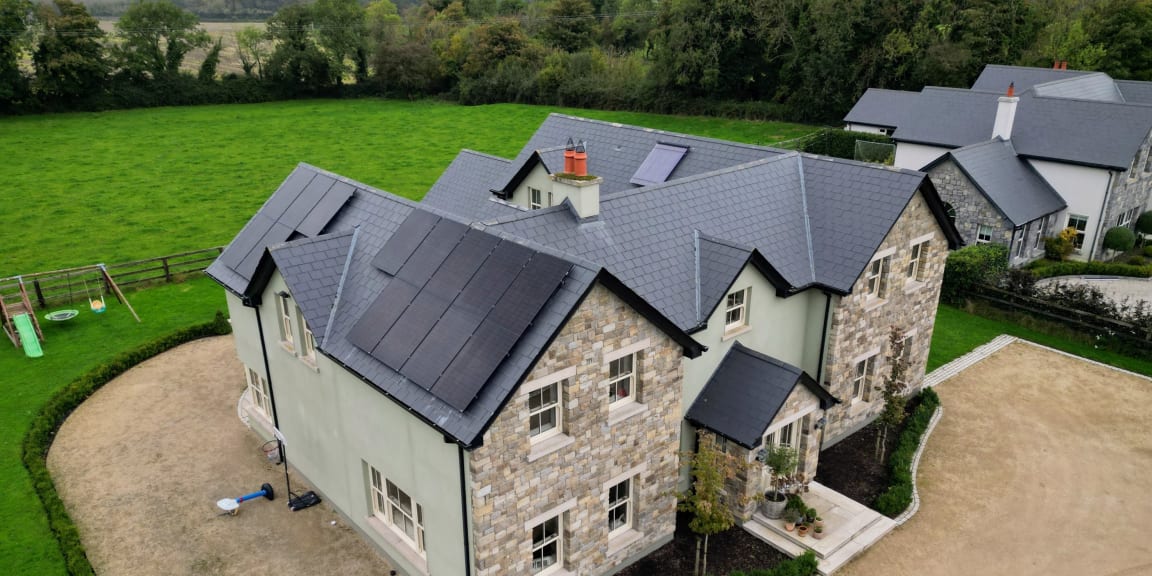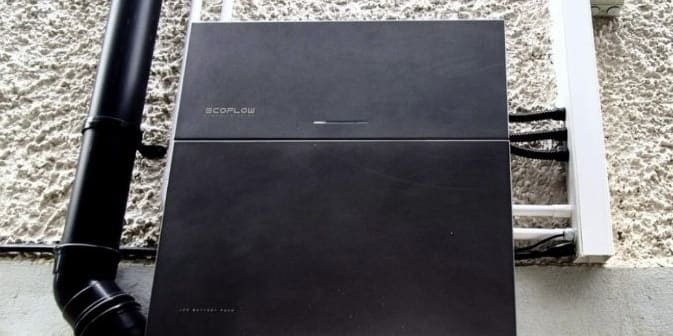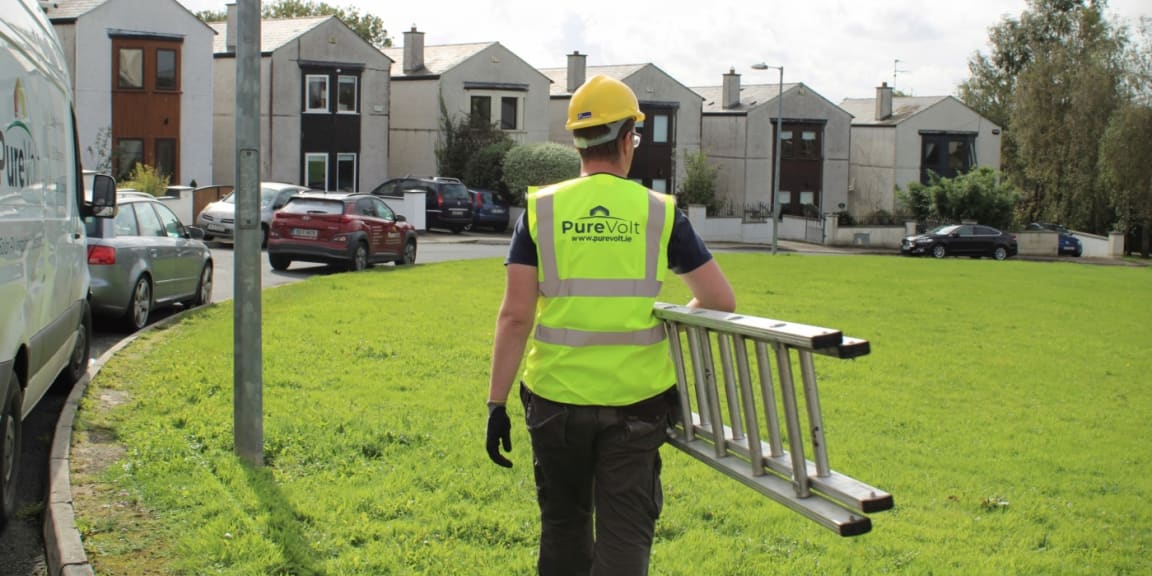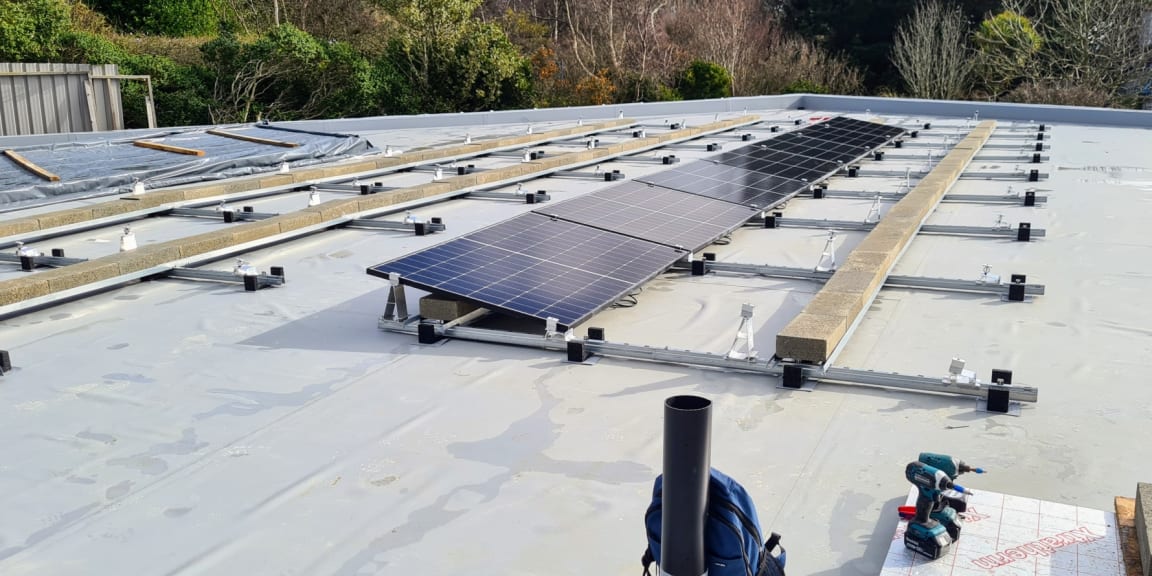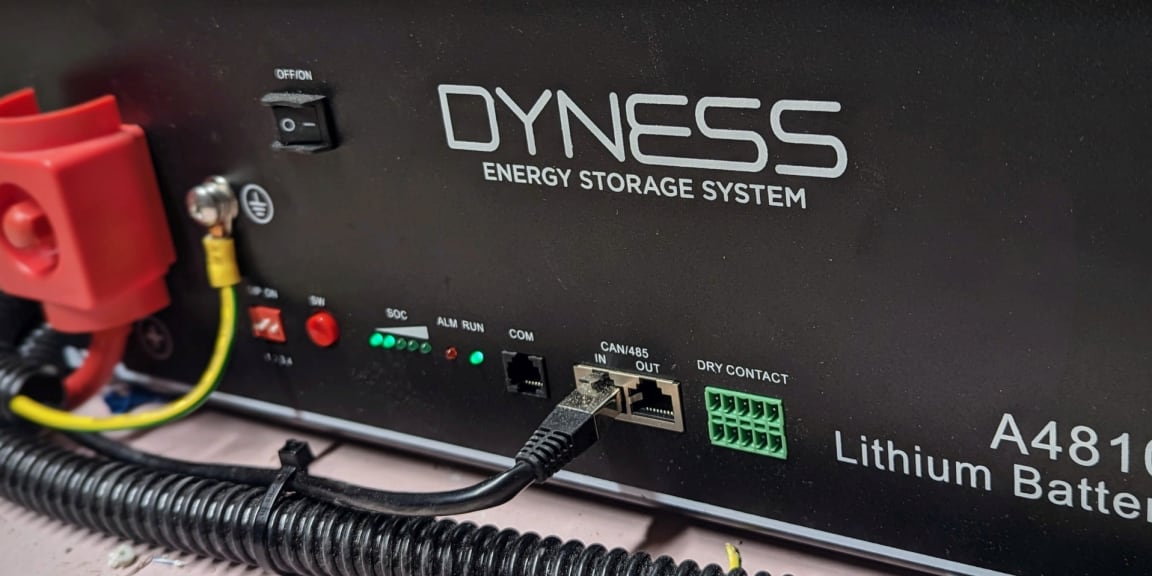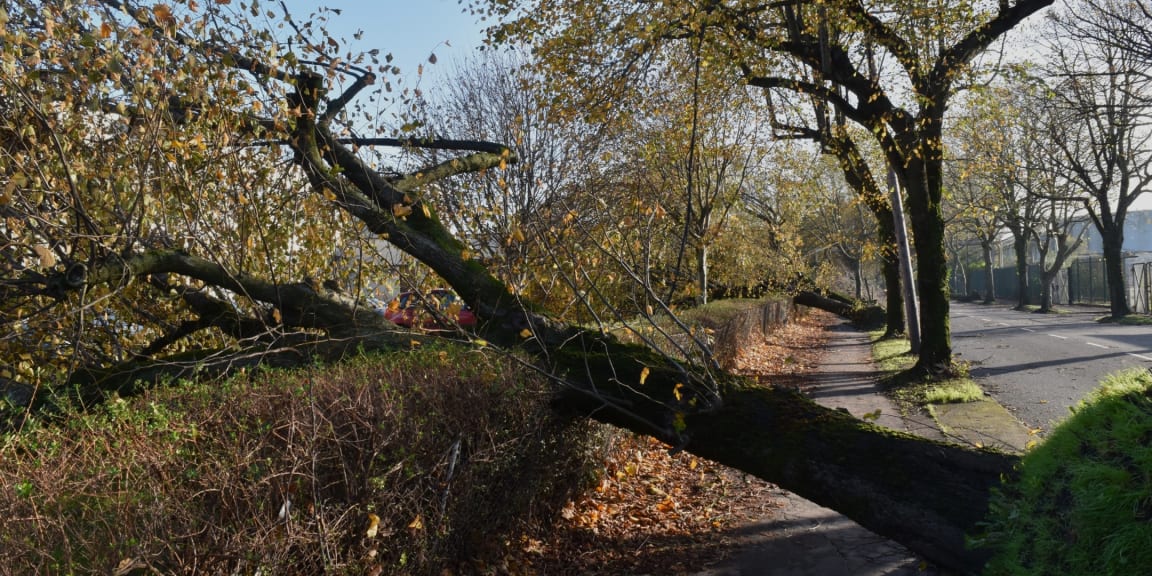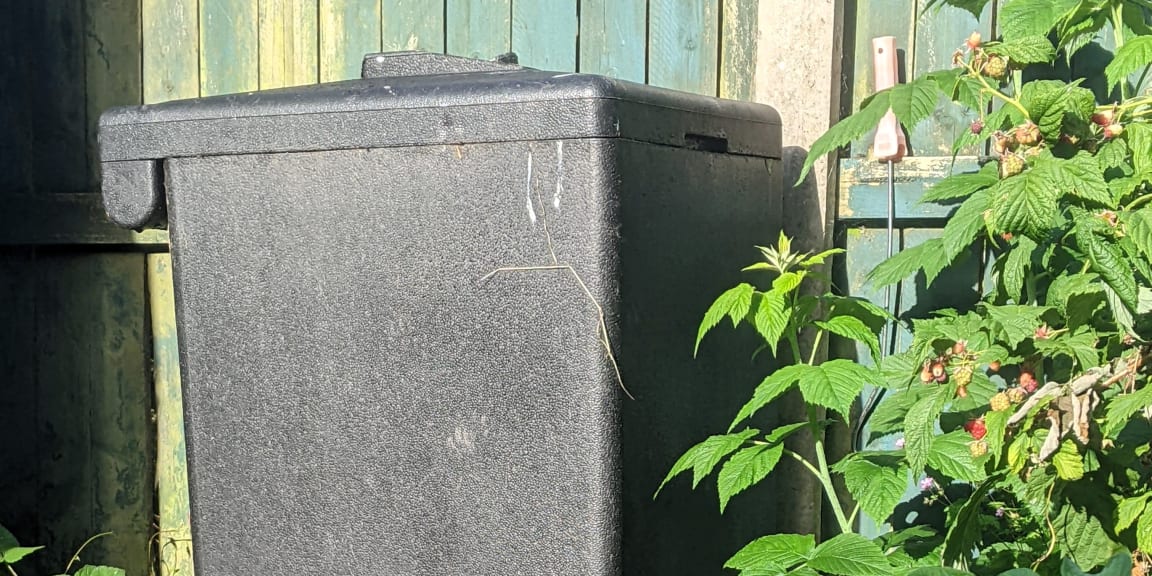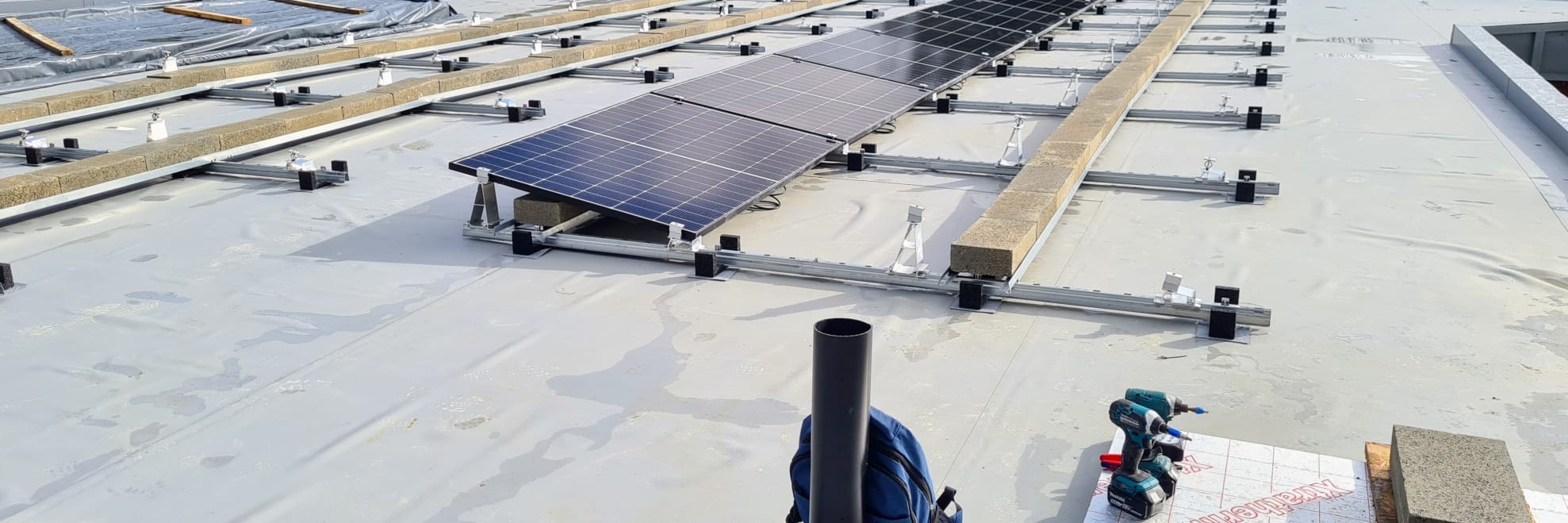
Solar panel mounting options we offer
How do the different solar panel mounting options work?
We offer three main mounting types. The right one depends on your property and priorities. Below is a clear explanation of each option, what they involve, and things to consider.
Roof mounting (pitched roofs)
If your home has a pitched roof with slates or tiles, solar panels can be added without disturbing what's already there. We fix a mounting system directly to the roof structure underneath, usually the rafters, and the panels sit just above your existing tiles. Nothing gets removed. The panels follow the same angle as your roof, which for most homes in Ireland, works just fine.
Roof mounting explained
- Solar panels are mounted directly on top of your existing slates or tiles.
- Your roof slates or tiles are not removed. The solar panels sit on their mounting system just above.
- The panels follow the angle of your roof, which can't be adjusted.


Flat roof mounting
Yes, solar panels can go on flat roofs. We mount them at a slight angle - around 15 degrees - to help catch more sun. The system isn't screwed into your roof. Instead, it's held in place with ballast, which means it's heavier. Because of that extra weight, you may need a structural check to make sure your roof can handle it. A full setup can weigh up to 100kg per panel.
Flat roof mounting explained
- Yes, solar panels can be installed on flat roofs.
- Panels are installed at a slight tilt (approx. 15°) to improve solar exposure.
- The system is not fixed with screws. It is held down with ballast (weighted frames).
- You may need to get assessment by a structural engineer or alike to ensure your roof can support the additional weight which can be up to 100kg per solar panel.

Roof mounting - pros and cons
Mounting panels on your roof is the most common setup, and for good reason. It makes use of space you're already working with and suits most homes. But like any option, it has its strengths and limitations depending on your roof type and layout.
Why it might suit you
- Uses free, unused space on your roof you're not using for anything else.
- The lowest cost option.
- High up so less likely to be shaded.
- Most Irish roof pitches are around 30 degrees which is ideal for solar.
Why it might not
- Panels sit at the same angle and direction as your roof. If your roof faces the wrong way (especially north), it is not ideal.
- You might not have enough space for the number of panels you want.
Ground mounting
If your roof isn't suitable or you simply prefer another option, panels can be installed on the ground. The mounting system sits on firm, level ground and is held in place with ballast. If the ground is uneven or soft, it may need to be levelled with gravel or stone. A trench will also be needed to run cabling back to the house.
Ground mounting explained
- Panels are installed on a mounting system that sits on firm, level ground.
- System is held down with ballast.
- If the ground is soft or uneven, it may need to be levelled with stone/gravel to be a firm base for the mounting to sit on.
- A trench is needed from the panels to the house for electrical cabling.
- Clients do groundwork themselves.


Ground mounting - pros and cons
Ground mounting can be a great choice if your roof isn't ideal or you just want more flexibility. It lets you choose the best angle and direction for your panels. It does cost a bit more, and being lower down means shading needs to be considered - but for the right setup, it works really well.
Why it might suit you
- Good option if your roof is not suitable or is too small.
- You can set the perfect angle and direction for the panels.
Why it might not
- More expensive than roof mounting.
- Lower down so more at risk of shading from trees or buildings nearby.
Planning permission
Since the planning permission updates in October 2022, the vast majority of roof-mounted solar panel systems do not need planning permission. There is the odd exception where planning permission may be required - such as protected buildings, architectural conservation areas, or where glare might cause an issue. You can read more in our article: Planning Permission for Solar Panels - PureVolt
Ground-mounted systems might also be exempt from planning permission, depending on their size and location. More detail can be found under 'Wind turbines and solar panels' here: Planning Permission for Altering a House — Citizens Information
Conclusion
Every property is different, and so is every solar setup. Whether it's on your roof or on the ground, what matters is choosing the mounting option that works best for your space, your goals, and your budget. We'll talk you through the options, explain what makes sense technically, and help you land on the right fit - no sales pitch, just straight advice.
